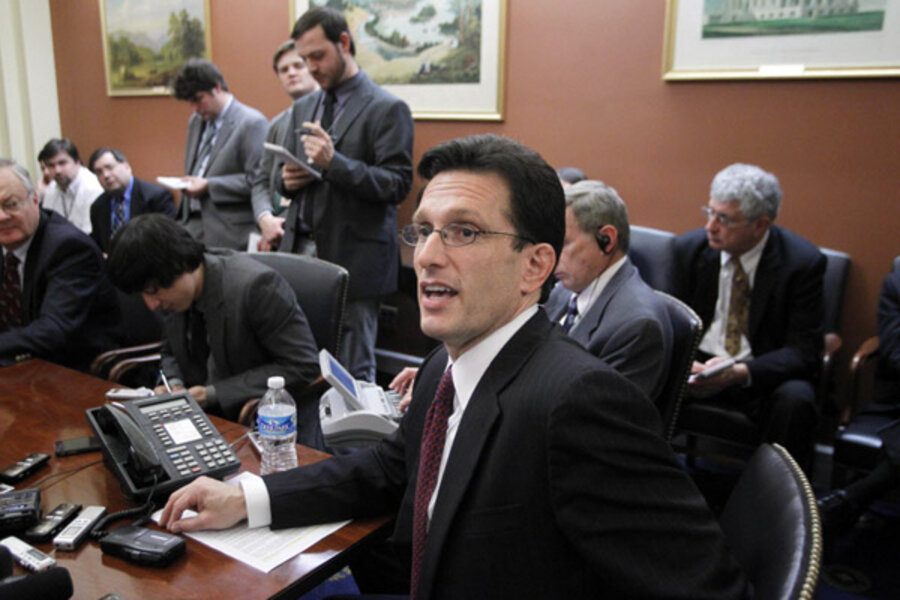House passes bill to avert government shutdown. What's in it, exactly?
Loading...
The Republican-controlled House on Tuesday passed a temporary spending bill that cuts $4 billion out of US appropriations while keeping the government running for another two weeks.
This “continuing resolution” legislation is almost certain to pass the Senate: Senate Democratic leader Harry Reid says he expects his chamber to vote on it within 48 hours. President Obama is likely to sign it, too, even though the White House really would prefer that the kicking-the-can-down-the-road period be lengthened from two weeks to a month.
Hurray! Washington has managed to avoid a government shutdown. For the moment.
But what’s in this bill, HJ Res 44, exactly? Good question. You can read the text of it here, in case you’re interested. In general, it keeps government spending for most discretionary programs at last year’s level, until March 18, when it turns into a pumpkin.
The $4 billion in reductions are not whacked out of spending across the board. They come from eliminating eight programs that Mr. Obama previously had targeted for extinction, saving $1.24 billion, and cutting out some $2.7 billion in earmarks – pet projects inserted into US spending plans by individual lawmakers.
The programs that are getting zeroed out include the Smithsonian Legacy Fund, which is losing $30 million. This fund, notes a fact sheet put together by the House Appropriations Committee, was a one-time thing meant to revitalize the Smithsonian’s Arts and Industries Building, and it’s not needed anymore.
The Department of Education’s "Striving Readers" program is also being eliminated, saving $250 million. Reducing help for kids struggling to read sounds bad, doesn’t it? Yes, but Obama asked for this to go, as it duplicates the $14 billion in Title I reading-assistance cash that the government is already spending.
Other programs getting the heave-ho include several other education efforts and a $29 million Department of Agriculture broadband direct-loan subsidy program.
“This program is duplicative of several other federal programs, and the Agriculture Inspector General has uncovered abuses and inconsistencies in the program as well as a lack of focus on the rural communities it is intended to serve,” says the Appropriations Committee.
As for the earmarks, they have a bad name on Capitol Hill these days, given America’s tough fiscal times, and GOP leaders have banned them. So that money probably was going away under any circumstances.
Among the earmarks that the continuing resolution eliminates are a $1 million solar-battery project at the Border Patrol, a $4 million Coast Guard bridge-alteration effort, and a $25 million rail-relocation program at the Transportation Department.
What happens now? Congress and the White House face doing the whole thing over again in the middle of the month, that’s what. Democrats are not particularly happy about Tuesday's bill passage, because they figure two weeks is not enough time to come to agreement on a broader spending bill. They claim that the deeper cuts Republicans want will lead to thousands of furloughs of federal workers and threaten the nascent economic recovery.
But Republicans control the House and are capable of blocking action in the Senate. They say that spending has skyrocketed in recent years and that they’re only trying to return the federal government to prerecession spending levels.
“It’s bloated. We want to take it back down to where it’s reasonable, where we can live with it,” said Rep. Harold Rogers (R) of Kentucky, House Appropriations chairman, during floor debate Tuesday.
As for the length of time necessary to strike a longer-term deal and avoid a government shutdown, “two weeks is plenty of time,” said Representative Rogers. “Plenty of time in the House, anyway. I know the Senate works more slowly.”





